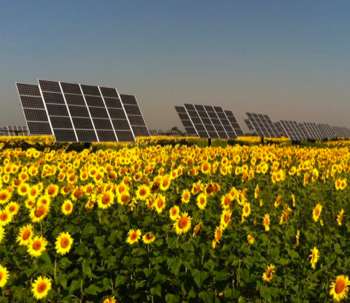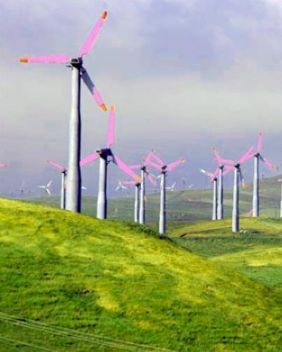 Total investment in renewable power and fuels last year surged by 17% to a record $257 billion, according to a report issued yesterday by the United Nations Environment Programme. India expanded its outlays the fastest in 2011, with an impressive 62% increase, thanks to its National Solar Mission.
Total investment in renewable power and fuels last year surged by 17% to a record $257 billion, according to a report issued yesterday by the United Nations Environment Programme. India expanded its outlays the fastest in 2011, with an impressive 62% increase, thanks to its National Solar Mission.
The US overtook China in the race to be the lead investor in renewable energy, with a 57% leap in its outlays to $51 billion. But new markets also opened up, bringing the total number of countries installing wind, solar and biomass systems to around fifty.
Clean energy sources have now grown to supply 16.7 % of global energy consumption and, excluding large hydro-electric, account for 44% of all new generating capacity added worldwide in 2011.
As solar technology costs plummeted, some photovoltaic (PV) manufacturers like the U.S.-backed Solyndra went bankrupt, but the energy sector reached parity in its competitiveness with dirty fossil-fuels like coal.
Interest in geothermal power has taken hold in East Africa’s Rift Valley and the use of modern biomass for energy purposes is expanding in all regions of the globe. Globally there are more than 5 million jobs in renewable energy industries, and the potential for job creation continues to be a main driver for renewable energy policies.
“Despite the continuing economic crisis in some key traditional markets, and continuing political uncertainties, more renewable energy was installed last year than ever before.” said Dr. Mohamed El-Ashry, Chairman of the Renewable Energy Policy Network for the 21st Century (REN21), which produced the Renewables Global Status Report, also issued yesterday.
 “Policies helped to drive renewable energy forward. Policy development and implementation were stimulated by the Fukushima nuclear catastrophe in Japan, along with improvements in renewable energy costs and technologies. As a result, renewable energy is spreading to more countries and regions of the globe.”
“Policies helped to drive renewable energy forward. Policy development and implementation were stimulated by the Fukushima nuclear catastrophe in Japan, along with improvements in renewable energy costs and technologies. As a result, renewable energy is spreading to more countries and regions of the globe.”
In the United States, renewable energy (including large hydro) provided 12.7% of total domestic electricity in 2011, up from 10.2% in 2010, and 9.3% in 2009. An estimated 39% of electric capacity added in 2011 was from renewable sources, mostly wind power. Renewable energy sources accounted for about 11.8% of U.S. domestic primary energy production, for the first time surpassing the 11.3% from nuclear power).
China again led the world in the installation of wind turbines and was the top hydropower producer and leading manufacturer of PV modules in 2011. Wind power generation increased by more than 48.2% during the year.
In the European Union, renewable energy accounted for more than 71% of total electricity generating capacity additions in 2011, with solar PV alone representing nearly half (46.7%) of new capacity coming on stream.
Germany remained the third biggest market for renewable energy investment. Renewable sources met 12.2% of total final energy consumption and accounted for 20% of electricity consumption (up from 17.2% in 2010 and 16.4% in 2009).
READ the story full report at www.ren21.net/gsr



















